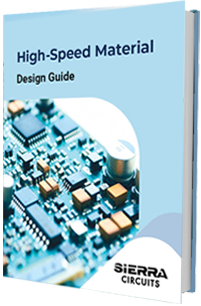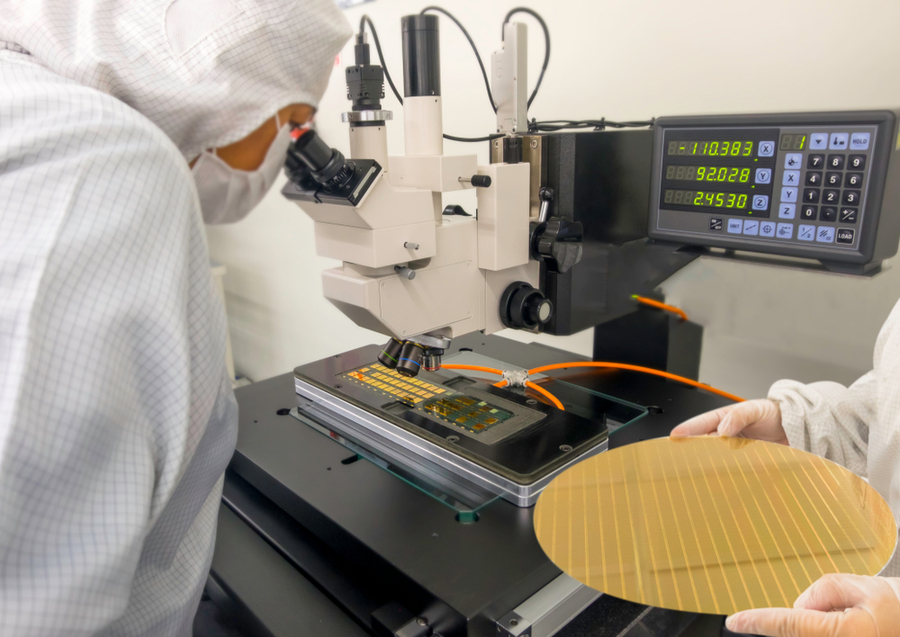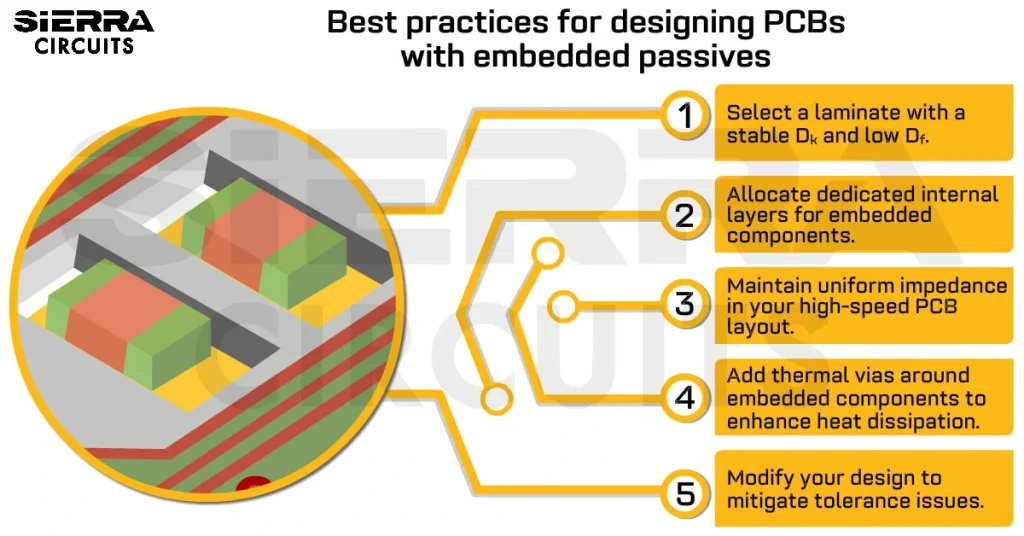Contents

On-demand webinar
How Good is My Shield? An Introduction to Transfer Impedance and Shielding Effectiveness
by Karen Burnham
The modern-day transceiver modules, servers, power amplifiers, and data channels call for high-performance dielectric materials that exhibit lower signal losses. Rogers 4350B and Panasonic Megtron 6 have minimal Df and Dk values and are considered low-loss high-speed PCB materials.
Achieving signal integrity is one of the primary design objectives if you’re working on a high-speed application. Dielectric constant (Dk) and dissipation factor (Df) are the two significant characteristics you need to consider while choosing a high-speed material.
How does low-loss material influence signal transmission?
Selecting a material that optimizes the board’s performance with cost-effective fabrication is quite challenging. Signal attenuation, propagation delay, and crosstalk are the major challenges that you need to handle. All of these issues can be addressed by choosing a low-loss material for your design.
Two main dielectric properties that impact signal losses are:
- Dissipation factor (Df): It is the measure of the signal’s attenuation as it travels through the transmission line.
- Dielectric constant (Dk): This value expresses how much a material concentrates electric flux.
The lower the Dk and Df values, the higher will be signal transmission efficiency.
When exposed to strong electric fields, materials with high dielectric constants often degrade more quickly than materials with lower dielectric constants. This is because high Dk materials tend to concentrate the fields within a small area and the intensity of such fields will be higher. Therefore, choosing a material with low Dk will aid in efficient signal transmission.
At the same time, signal attenuation is affected by Df at different frequencies. Generally, low Df materials are expensive when compared to FR-4 laminates. To reduce the cost of the stack-up, you can consider hybrid build-ups where different types of prepregs are incorporated. This also enhances the power integrity of your design.
Must-have qualities of a high-speed dielectric material
- Resistant to chemical and moisture absorption to retain its electrical properties.
- Uniform and low dielectric constant throughout the material (less than 4)
- Lower dissipation factor (lesser than or equal to 0.004)
- High surface resistivity (around 1010 Ω/cm)
- High volume resistivity (around 1010 Ω/cm2)
- High electrical strength (around 1000 volts/mil)

High-Speed Material Design Guide
6 Chapters - 19 Pages - 30 Minute ReadWhat's Inside:
- Importance of choosing the right material for your high-speed design
- Parameters that affect material selection
- Effect of dielectric constituents on your circuit board
- Characteristics of high-speed materials
- Effect of resin content and glass weave structure on your PCB
Download Now
Popular high-speed PCB laminates
There has been extensive research on developing low-loss materials in the past few decades. It is noteworthy that embedded optical channels have shown promise in transporting high-speed digital signals within PCBs. Low-loss materials are preferred for high-speed signal transmission due to their efficiency.
Some of the most prominent high-speed materials include Rogers RT/duroid, RO3000, FR408HR, Rogers 4350B, and Panasonic Megtron 6. They exhibit all the essential properties consistently under different operating conditions and wide frequency ranges.
Here are the main traits of Rogers 4350B and Panasonic Megtron 6 materials that you need to know before selecting them for your high-speed PCB design.
Features of Rogers 4350B
A glass-fiber reinforced hydrocarbon ceramic laminate is used to manufacture the Rogers 4350B. You can fabricate Rogers 4350B boards using conventional FR-4 processing methods. Some of the significant features of Rogers 4350B are:
- Excellent dimensional stability: The CTE of this material is almost equal to that of copper. This enables the board to be dimensionally stable even at extreme temperatures.
- Constant Dk at various frequencies: Stable Dk makes them suitable for controlled impedance boards.
- Low insertion and dielectric losses: Rogers 4350 laminates incorporate low-profile copper which in turn reduces the signal losses. This property makes them the right choice for broadband and other high-speed applications.
- CAF resistant: Avoids formation of conductive filaments for high-voltage applications.
- Superior thermal resistance: Lower CTE along the Z axis and higher Tg (280°C) enable them to operate in a desired at higher temperatures.
Traits of Panasonic Megtron 6
Panasonic Megtron 6 has less loss at high frequencies and stable dielectric properties. The significant properties of Panasonic Megtron 6 make them more durable and help them withstand any kind of external stress. Hence, they find their prominence in wireless and networking applications.
Some of the notable features are:
- Suitable for HDI applications: Good thermal properties of this material make them ideal for high-density boards.
- Lowest transmission loss
- Compatible with lead-free soldering
- Excellent through-hole reliability
- RoHS compliant
Difference between Rogers 4350B and Panasonic Megtron 6
Both of these laminates are built to suit the requirements of high-speed applications. However, there are a few minor differences you need to know before identifying the best one for your design.
Thermal and electrical properties
| Properties | Panasonic Megtron 6 | Rogers 4350B |
|---|---|---|
| Df at 10 KHz | 0.004 | 0.0037 |
| Dk at 10 KHz | 3.35 | 3.48 |
| Coefficient of thermal expansion (X) | 15 ppm/°C | 10 ppm/°C |
| Coefficient of thermal expansion (Y) | 15 ppm/°C | 12 ppm/°C |
| Coefficient of thermal expansion (Z) | 45 ppm/°C | 32 |
| Glass transition temperature (Tg) | 185°C | 280°C |
| Thermal conductivity (k) | 0.42 | 0.69 |
| Moisture absorption | 0.14% | 0.06% |
| Decomposition temperature (Td) | 410°C | 390°C |
| Tensile modulus | 2.310 mpsi | 2.053 mpsi |
Prepreg and lamination
| Parameters | Rogers 4350B | Panasonic Megtron 6 |
|---|---|---|
| Prepreg availability | A 3.6-mil (one glass style) and a 4-mil (two glass styles) prepregs are available | A wide range of prepregs are available in different thicknesses and glass styles (Dk glass cloth: R-5670(N) and normal glass cloth: R 5670(K), R 5670(G)) |
| Cost | Expensive | Less expensive |
| Hybrid stack-up compatibility | Not suitable | Suitable |
| Fabrication | Complexity increases due to the restriction on using prepregs and the lamination cycles | Easier as there is flexibility in building hybrid boards. A wide range of Megtron 6 core and prepreg thicknesses and resin composition makes it simpler to construct stack-ups |
| Laminate thickness | 0.10 mm to 1.52 mm | 0.051 mm to 0.890 mm |
| Foil thickness | 1/2 ounce | 1/3 ounce |
Similarities between Rogers 4350B and Panasonic Megtron 6
These materials are suitable for low-loss applications due to their thermal characteristics and stability. They have some similar characteristics that allow the designer to choose between them. Some of them are listed below:
- Used extensively in high-speed digital products and RF PCBs.
- They are based on hydrocarbon resins.
- Both laminates are not available with a quarter-ounce copper coating.
- Can be incorporated with low-profile foils to prevent signal reflections at high frequencies.
To learn about radio-frequency material selection, see how to pick RF PCB materials: 6 important factors to consider.
The characteristics of the high-speed PCB materials impact heat dissipation, signal transmission, and signal. It is challenging to identify the ideal material to facilitate high-speed and HDI applications. Panasonic Megatron 6 and Rogers 4350B laminates are more widely used in the industry due to their high-speed reliable characteristics. These materials guarantee lower losses, uniform CI, economical production, and steady Dk under various operating circumstances.
Write to us in the comment section, if you have any queries on high-speed PCB material selection.

High-Speed PCB Design Guide
8 Chapters - 115 Pages - 150 Minute ReadWhat's Inside:
- Explanations of signal integrity issues
- Understanding transmission lines and controlled impedance
- Selection process of high-speed PCB materials
- High-speed layout guidelines


















Start the discussion at sierraconnect.protoexpress.com